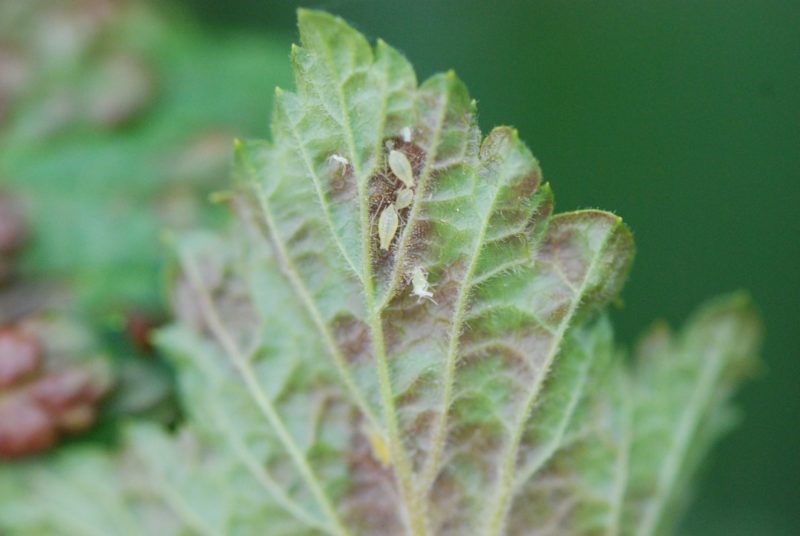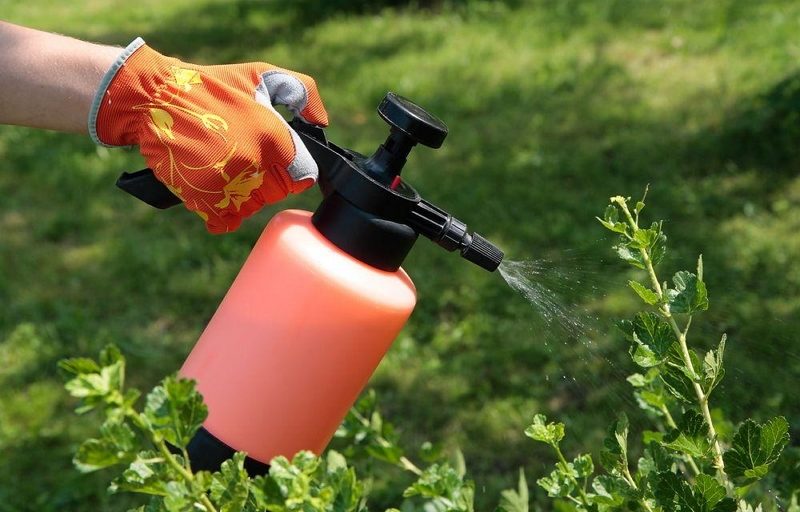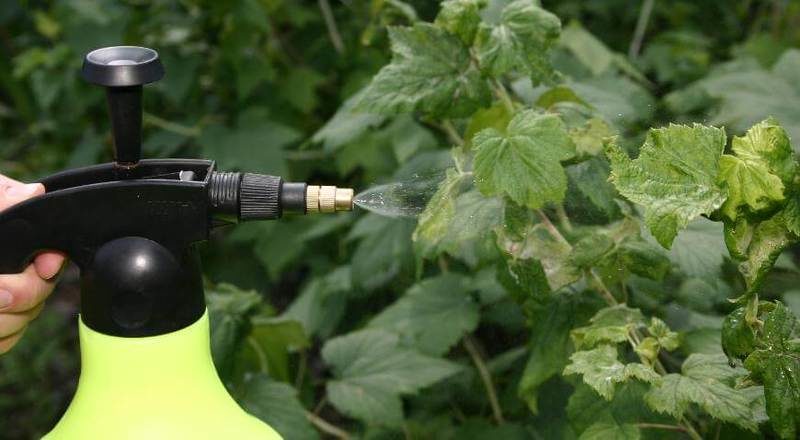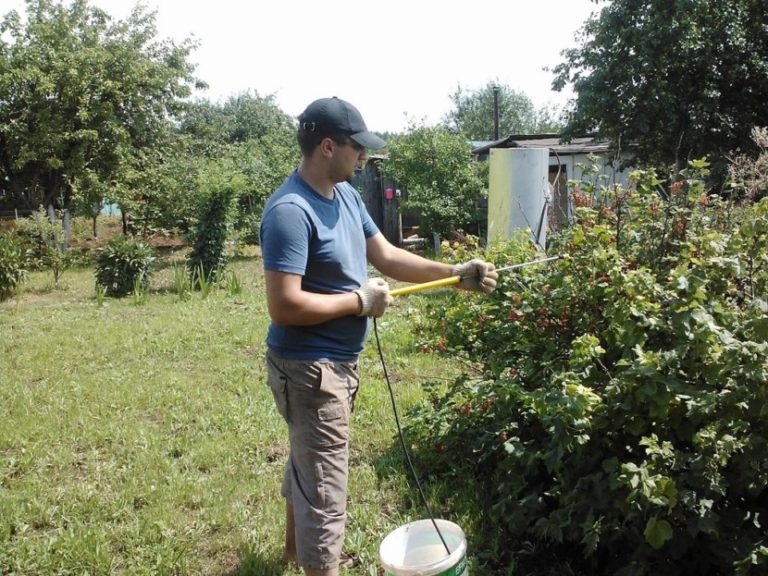Growing fruit bushes is a fascinating, but also quite troublesome task, because almost every berry has to deal with the ubiquitous pests. Chemicals will help preserve the crop, but if, at the first sign of an undesirable neighborhood, you enter into a ruthless duel, you can easily get by with simple folk remedies. What urgent measures should be taken if aphids settled on currants, how to deal with pests, and, most importantly, how to recognize the danger in time?
Material Content:
- 1 How to detect aphids on currant bushes
- 2 Basic rules for fighting aphids with simple means
- 2.1 The use of infusions is an effective way to expel aphids from currants
- 2.2 How to fumigate against aphids
- 2.3 Boiling water against aphids - can a pest survive in extreme conditions?
- 2.4 The use of chemicals against aphids
- 2.5 The mechanical way to fight aphids
- 2.6 Laundry soap - an effective insect repellent
- 3 How to protect currants from pest attacks
How to detect aphids on currant bushes
It is quite difficult for inexperienced beginners to recognize pests on the currant bushes, because insects are in no hurry to find their location, hiding between the leaves, in internodes and even on the fruits. Currants should be subjected to a thorough inspection during the entire warm season, but at the end of May and the beginning of summer they are especially careful - it is at this time that the aphids are active and try to settle in new territories.

The main sign of aphids is a large accumulation of ant families near currants. Novice gardeners believe that ants eat pests, and carefully guard the black "helpers". Do not be mistaken and make a gross mistake - the ants feed on the sweet juice secreted by the aphids and carefully look after their “herd”. Carefully looking at the life of insects on currants, you can see that ants even help aphids to get over to healthy juicy shoots.Before getting rid of aphids, it would be worthwhile to drive out voluntary "guards" from the site.
In addition to the accumulation of ants near the currant bushes, there are several more signs of the appearance of aphids on plants:
- reddish swellings on the leaves (usually a white or red currant);
- folded leaves (blackcurrant);
- sticky liquid on branches and leaves;
- young shoots stop growth and development.
Having found the right signs of pests, you should immediately take on their destruction using proven means.
Basic rules for fighting aphids with simple means
Before fighting aphids with folk remedies, you need to familiarize yourself with a few simple requirements, strict adherence to which will certainly lead to an excellent result.

Basic rules for the use of self-prepared formulations:
- It is better to go to the fight against aphids in the evening hours - some mixtures under the influence of sunlight can lose their properties or harm the currant.
- Despite the safety of most folk remedies, it is better to protect your hands with gloves, and your face with a mask.
- It is not worth experimenting with formulations and adding your own components - in the absence of experience, you can easily destroy the bushes.
- The weather must be calm and dry - gusts of wind will complicate the treatment, and rain will simply wash away the mixture that is harmful to aphids.
Another little secret that will help fight aphids is that you can apply the complex method using several means at once (this can be mechanical impact, spraying, fumigation).
The use of infusions is an effective way to expel aphids from currants
The production of liquid harmful to pests is almost the same - to grind raw materials, pour water and withstand the necessary time, occasionally vigorously mixing the mass. The finished product remains to be filtered, and you can go to fight against insects that are poised for your favorite currant.

It has been observed that aphids are sensitive to certain plant species, preferring to get away from treated bushes. Potato smell quickly drive away pests, and it does not matter what was used to prepare the infusion - fresh herbs or dry tops. Pour crushed raw materials with warm water (take the components of the product in equal parts), wait 3-4 hours. After filtering, you can start spraying currants.
Onion infusion - a real lifesaver if pests were not detected on time and settled throughout the bush. Three treatments are enough for the aphid to forget the path to the currant for a long time. 200-300 gr. chop the raw onion, pour a bucket of water. Wait a day, you can spray the bushes affected by aphids.
It proved to be good in the fight against aphids decoction of wood ash. Add 5-7 handfuls of ash to a bucket of water, boil, leave for 2 hours. Add a quarter of the bar of household dark soap (pre-rub). Spray currant bushes.
Often used against insects tobacco infusion. 200-350 gr. chopped tobacco leaves pour boiling water (5 l). Close the container tightly and send to infuse. When completely cooled, filter and treat the bushes.
How to fumigate against aphids
Fumigation to kill aphids is a rather time-consuming process, but effective. The most effective is tobacco smoke - just one treatment is enough to drive away pests.
Spread a small pile of straw near the currant bushes (if it is dry, it’s better to moisten - there will be more smoke). On top of the straw, be sure to put 2-5 kg of tobacco leaves, also raw. Set fire to straw, maintain fire for at least an hour. In the absence of straw, bird cherry branches, celandine stalks can be used.
Boiling water against aphids - can a pest survive in extreme conditions?
Boiling water is usually used in early spring, even before the snow melts and the kidneys swell on the currant. Aphid lays eggs near the kidneys, you can arm yourself with a magnifying glass and find tiny points on the shoots - these are the future enemies of the gardener.
To process one currant bush, you may need up to a bucket of water. Bring the liquid to a boil and immediately go to the plants (the water will cool slightly along the way). Pour boiling water into a metal watering can and douse all the shoots, especially carefully watering the trunk circle.
When scalding currants, you need to ensure that boiling water goes in thin streams - a wide stream can damage the plant.
Another advantage of using boiling water is that it perfectly protects currants from powdery mildew.
The use of chemicals against aphids
If folk remedies for aphids are powerless, and pests continue to destroy currants, you can not do without chemicals. The basic rule of their use is that at least a crescent must pass between processing and the start of harvest.

Among the effective drugs against malignant pests can be identified:
- Actellic (one ampoule is enough for 2 liters of water, but with a large number of pests, you can make the solution more concentrated);
- Actara (per liter of water you need only 1-1.5 g. Of an insecticidal agent, the dosage is not recommended to be exceeded);
- Kinimiks (a drug ampoule goes to a bucket of water).
Often, the use of an aggressive solution is enough for the aphid to disappear from the currant bushes, but if young insects are found during the repeated examination, the insecticide should be reused.
The mechanical way to fight aphids
If the pest was detected in a timely manner, and did not have time to occupy the entire bush, it is quite possible to stop attempts to settle on currants without resorting to spraying or fumigation. The main thing is to carefully inspect the entire plant, without missing a single leaf or shoot.
Adult insects are easy to spot - they usually gather on shoots or the bottom of leaves. If there are a lot of pests, you can’t remove them with your hands; it’s better to arm yourself with a sharp secateurs and ruthlessly remove all branches with pests. With a small amount of aphids, it is enough to tear off leaves with insects, and collect individual specimens lurking on the shoots with your hands.
Laundry soap - an effective insect repellent
In urgent cases, when there is no insecticide on hand, and there is no desire and time to mess with infusions, a concentrated soap solution will help.

It’s easy to cook it:
- Rub on a grater or with a sharp knife to turn into a fine crumb a bar of dark soap.
- Pour soapy crumbs with several liters of warm water.
- Stir the liquid vigorously until the crumbs completely disappear.
Thoroughly spray the bush without worrying about the fruits - the soap solution is completely safe for humans.
How to protect currants from pest attacks
It is not very difficult to get rid of annoying aphids, but it is better not to allow pests to currant bushes.
There are many preventative measures, you can choose any option:
- plant dill or carrots near the currant - their smell attracts the little grub, which is the main enemy of aphids and eats the pest with pleasure;
- regularly treat the garden from ants;
- to plant thyme or fragrant lavender between currants - their aphid smell does not tolerate and tries to get away;
- sprinkle the distance between bushes and near-stem circles with wood sawdust - here an earwig likes to settle, which feeds on aphids;
- hang birdhouses throughout the garden - some birds are malicious enemies of pests.
For the prevention, you can also use any herbal infusion - it is enough to process currant bushes several times a season to protect plants from tiny insects.
Do not give pests a single chance - you should start fighting insects immediately after detection.Folk proven remedies are no less effective than aggressive drugs, especially if you use them in a timely manner, without waiting for the aphid to spread throughout the currant. Plants will certainly thank for such care with rapid growth and excellent harvest.












